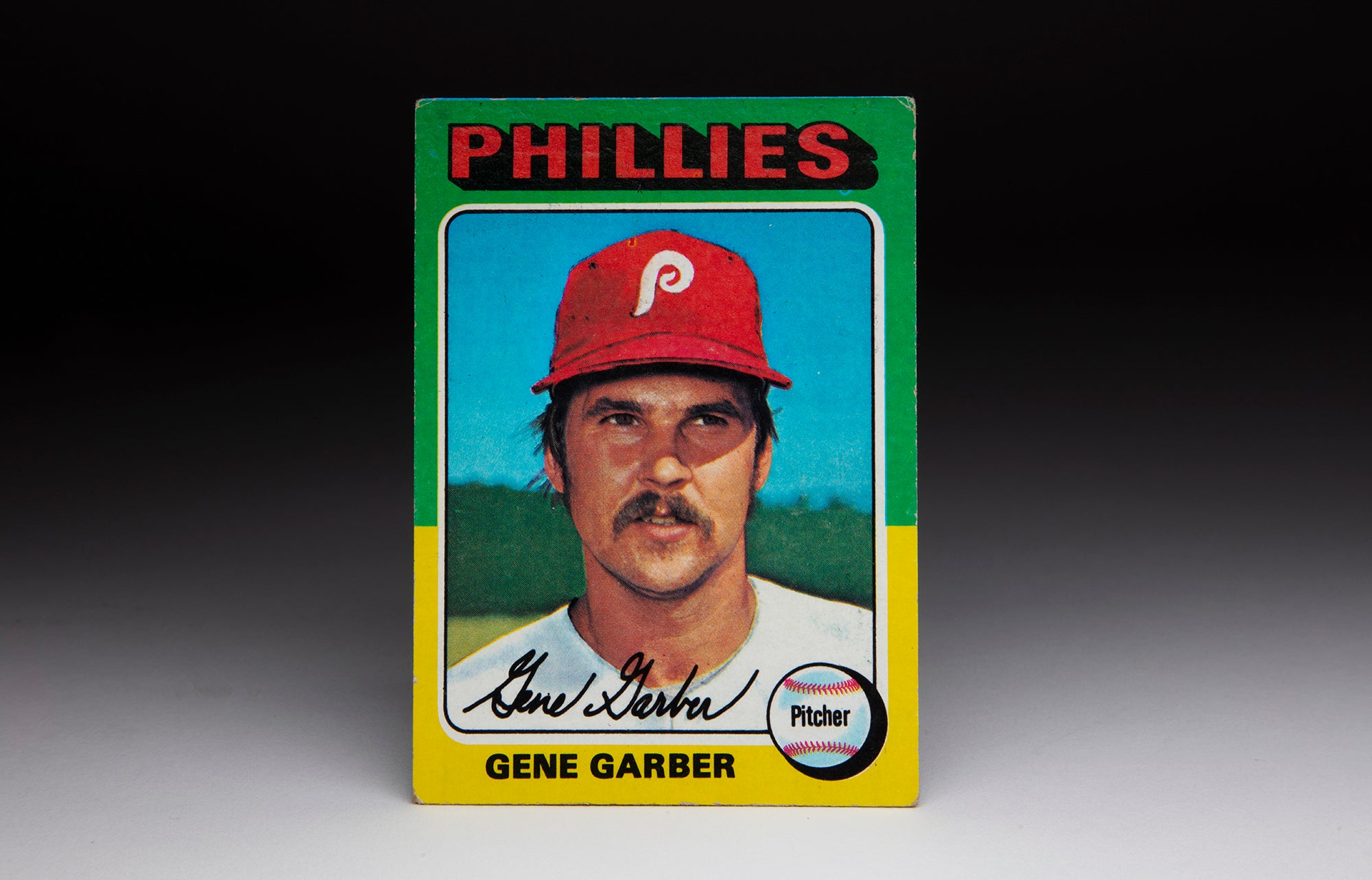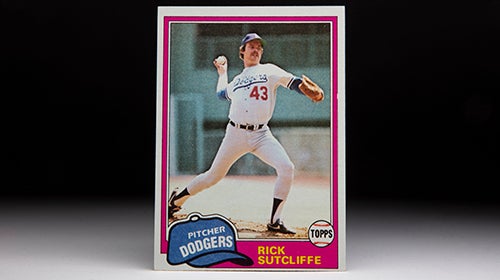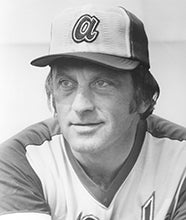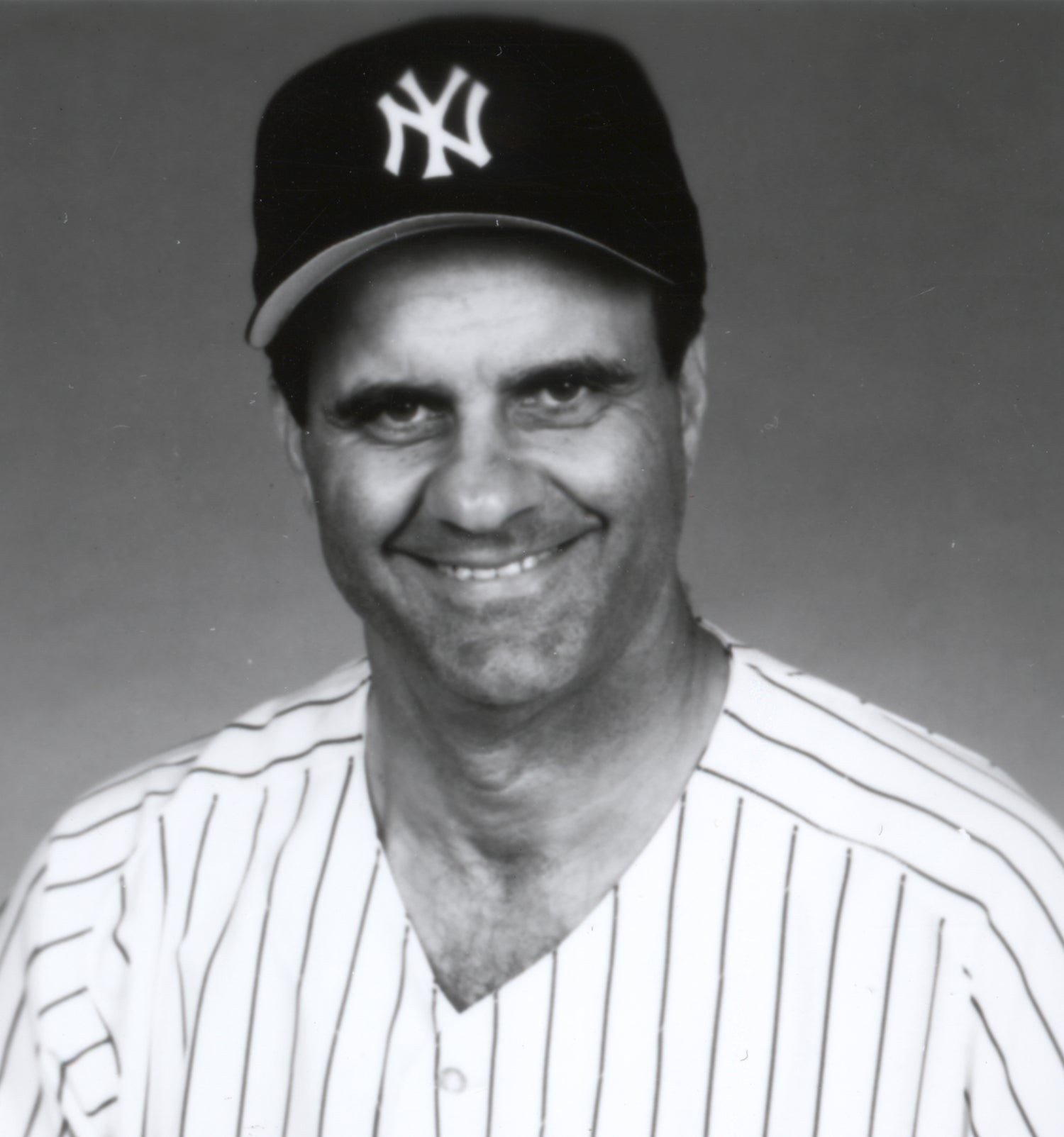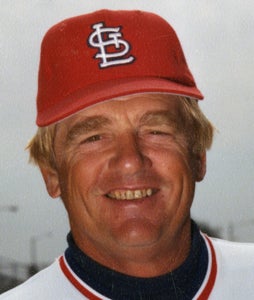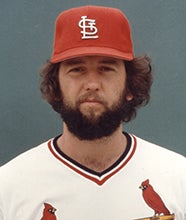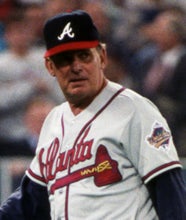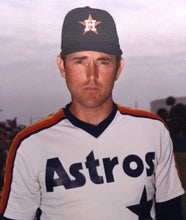- Home
- Our Stories
- #CardCorner: 1985 Topps Steve Bedrosian
#CardCorner: 1985 Topps Steve Bedrosian
In 1985, Steve Bedrosian started 37 games on the mound for the Atlanta Braves and completed none of them. No other pitcher in big league history has started more than 35 games in a year where they had zero complete games.
Without a radical change in how starting pitchers are deployed, Bedrosian’s record might be close to unbreakable. But thanks to his move back to the bullpen, Bedrosian is best remembered for something else: His Cy Young Award-winning season in 1987.

Bedrosian was born Dec. 6, 1957, in Methuen, Mass. – right on the Massachusetts/New Hampshire border. He grew up an ardent fan of Boston sports teams.
“I remember as far back as ’67,” Bedrosian told The Boston Globe in 1987 when he was a member of the National League All-Star team with the Phillies. “I hated Bob Gibson. He destroyed (the Red Sox in the 1967 World Series). We went to about 10 or 12 games a year then.
“I remember being home every summer, sitting in front of the television and checking out the All-Stars and dreaming of being there. Being a kid, you never thought of the real possibility. It was more of a dream.”
Graduating from Methuen High School in 1975, Bedrosian – growing into his 6-foot-3, 200-pound frame – was not seen as a big league prospect and instead enrolled at Northern Essex Community College. He moved on to the University of New Haven, which fielded an NCAA Division II baseball program.
In his one season at UNH, Bedrosian was 13-3 and helped coach Frank “Porky” Vieira’s team advance to the Division II College World Series.
“He pitched every other day as a starter and reliever, and I got some flak for using him too much,” Vieira told the Hartford Courant in 1987. “But at the time I knew he could be the next Goose Gossage. I told the scouts to do themselves a favor and make him a short reliever. His temperament was such that he could come in and throw 97 mph.
“It was impossible to keep him after that one year. I’ve had 46 players sign pro contracts, and he undoubtedly is the best I’ve ever had.”
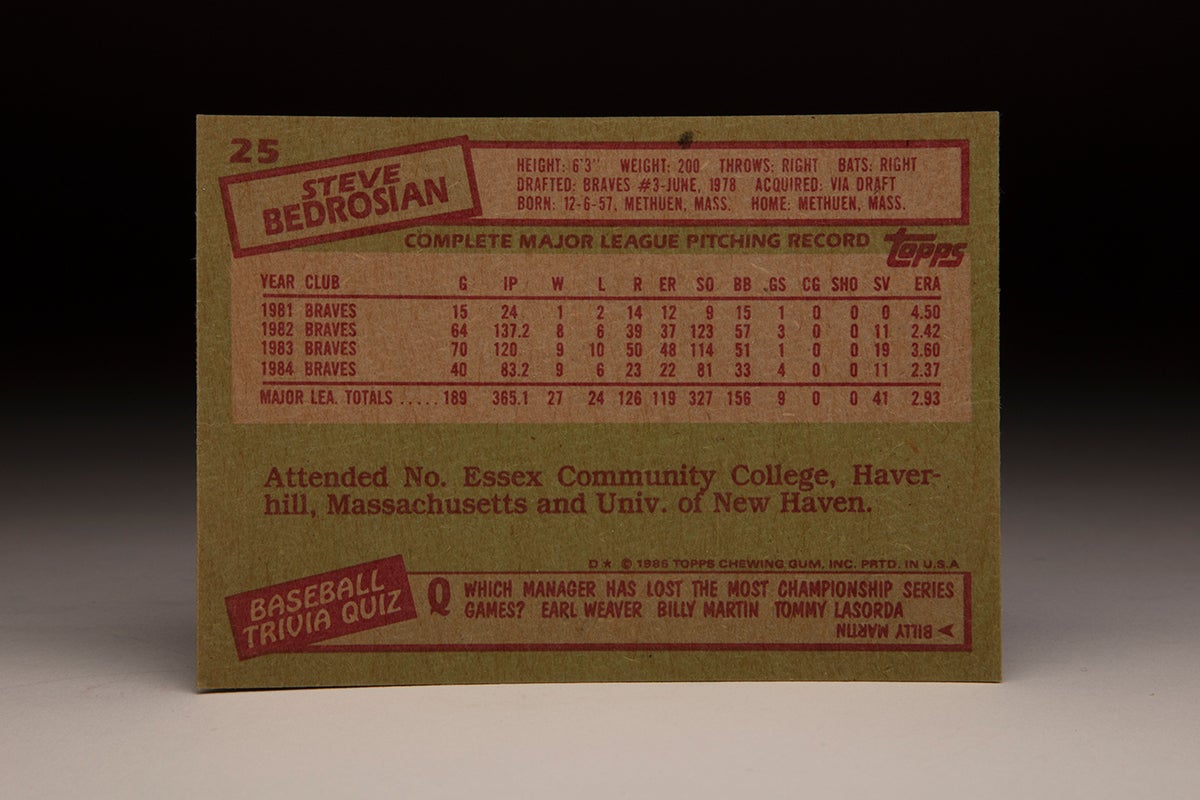
Taken by the Braves in the third round of the 1978 MLB Draft, Bedrosian signed for a reported $40,000 bonus and reported to Kingsport of the Appalachian League. He made six starts there, going 2-2 before earning a promotion to Class A Greenwood of the Western Carolinas League, where he was 5-1 in eight starts.
By 1979, Bedrosian’s fastball was regularly clocked at better than 95 mph. He moved up the Braves’ prospect list quickly – even meriting a visit by director of player development Hank Aaron, who came to Columbus, Ga., in May to watch Bedrosian pitch for the Double-A Savannah Braves.
“I’d like to sit in the stands behind home plate and watch this kid,” Aaron told the Atlanta Constitution. “But I don’t know if I’ll be able to.”
Aaron proved correct when fans quickly recognized him and forced him to seek refuge in the press box.
Bedrosian was 5-5 and among the Southern League leaders in strikeouts with 73 through 13 games before being shut down for the season. He returned to Savannah in 1980 and worked 203 innings as a starter going 14-10 with a 3.19 ERA and 161 strikeouts.
Following the 1980 season, the Braves put Bedrosian on their 40-man roster before assigning him to Triple-A Richmond for the 1981 campaign. He was 10-10 with a 2.69 ERA in 184 innings when the Braves brought him to Atlanta just after the end of the strike that wiped out almost two months of the MLB season.
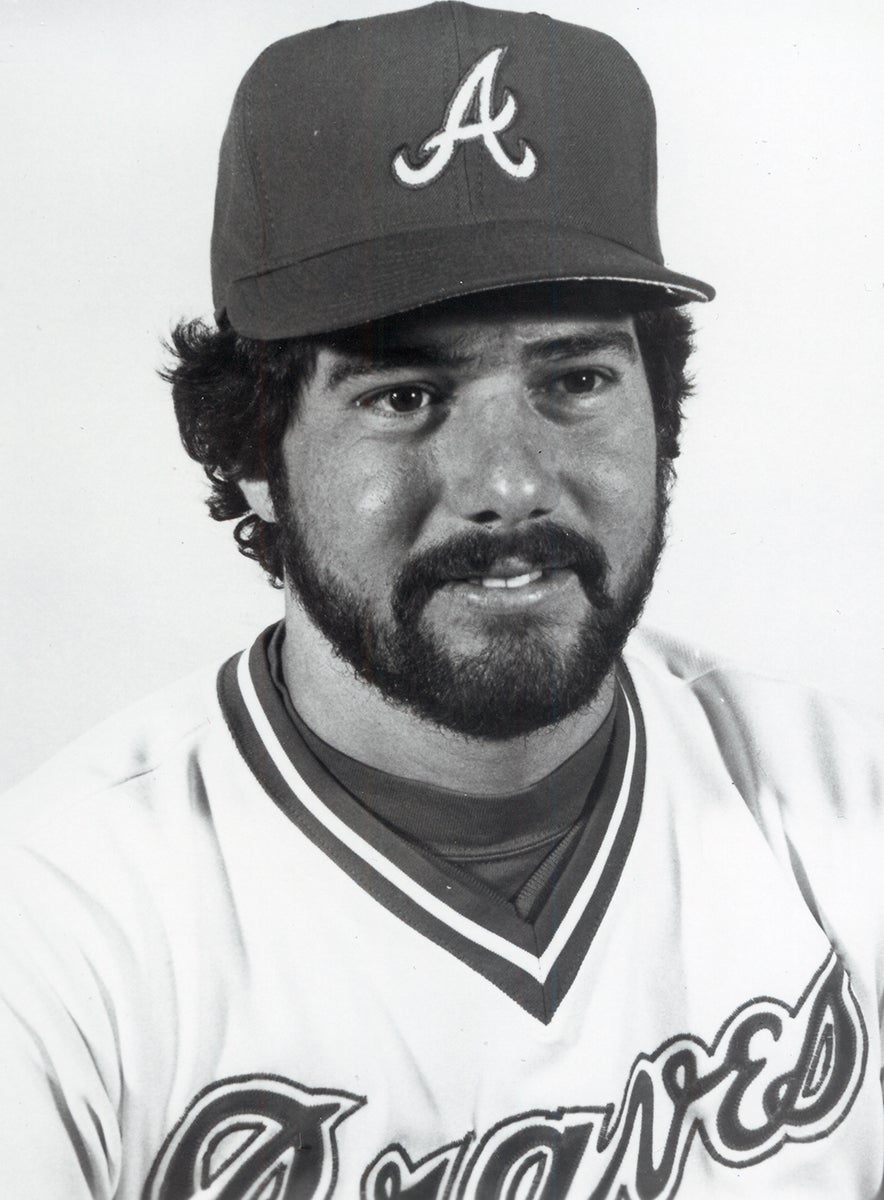
On Aug. 14, 1981, Bedrosian made his big league debut in relief of John Montefusco against the eventual World Series champion Dodgers – getting Bill Russell on a sacrifice fly before hitting pitcher Dave Goltz and then inducing Davey Lopes to pop out to second base.
The next night, Bedrosian picked up his first MLB win with a scoreless inning of relief of Phil Niekro (who was battling a nagging groin injury) by fanning Rick Monday and Jerry Reuss in a 1-2-3 frame against Los Angeles.
“Like everybody, of course, I wanted to be up here the first year,” Bedrosian told the Atlanta Journal. “But realistically, this is probably as fast as I could have expected. I had a lot to learn. When I first signed, I didn’t have anything but a fastball. Now, I can throw the slider and changeup at any time, even (with a full count). My curve is still not as good as I want it, but I’m working on it.”
Bedrosian finished the season with a 1-2 record and 4.44 ERA in 15 games and entered the offseason rated by many as the Braves’ top pitching prospect. He sharpened his skills in the Dominican Winter League but nearly lost his life toward the end of the season in a Jan. 25 car accident while riding with Yankees prospect Jim Lewis.
“We were coming home from Santiago after a game we had won, and all these people were in the streets celebrating,” Bedrosian told the Atlanta Constitution. “Jim swirled the car around to keep from hitting them and ran into this car coming in the opposite direction head-on.
Bedrosian suffered a concussion and lacerations to the face that required about 70 stitches to close.
“It could have been a lot worse,” Bedrosian told The Globe in 1987. “The big guy was watching out for me.”
Bedrosian made Atlanta’s Opening Day roster in 1982 as a swingman and started the Braves’ fourth game of the season, allowing three runs in 3.2 innings against the Astros on April 10. He made one more start that month – shutting out Chicago over seven innings on April 30 – before manager Joe Torre decided Bedrosian belonged in the bullpen.
Working as the primary setup man for Gene Garber, Bedrosian was working with a sub-2.00 ERA in mid-August before a couple rough late-season outings pushed his final mark to 2.42. He appeared in 64 games, going 8-6 with 11 saves and 123 strikeouts in 137.2 innings. Garber went 8-10 with 30 saves as Atlanta won the National League West and advanced to the NLCS vs. St. Louis.
“I wouldn’t be surprised if you see a lot of six-inning games in this series,” Cardinals manager Whitey Herzog told the Atlanta Constitution before Game 1. “With Bruce Sutter in our bullpen, and Gene Garber and Steve Bedrosian in their bullpen, I don’t think a team that trails by four or five runs after the sixth inning is going to win.”
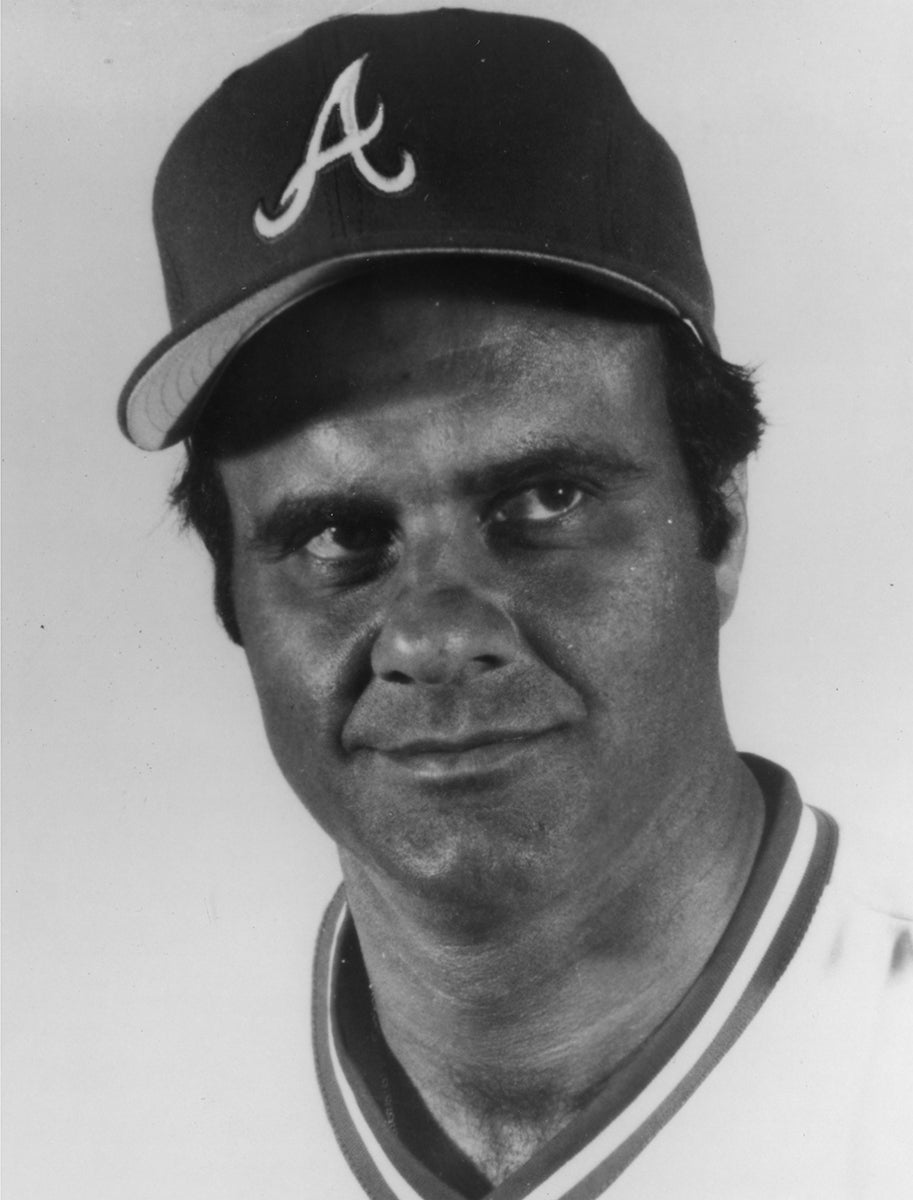
After Game 1 was scuttled by rain before becoming an official contest, it was replayed the following night. Bedrosian entered the game in the sixth inning in relief of Pascual Pérez with two on and no one out and the Cardinals leading 2-0. Bedrosian allowed a walk to Darrell Porter, RBI singles to Willie McGee and Ozzie Smith and a sacrifice fly by Bob Forsch before striking out Tom Herr. But Ken Oberkfell followed with another RBI single, chasing Bedrosian and giving St. Louis a 6-0 lead that would turn into a 7-0 win.
Bedrosian would pitch again in Game 3, striking out Keith Hernandez in the eighth inning of the Cardinals’ 6-2 win – a victory that sent St. Louis to the World Series.
Bedrosian was named the Sporting News NL Rookie Pitcher of the Year following the season and placed seventh in the Baseball Writers’ Association of America’s NL Rookie of the Year balloting. He put up similar numbers to his rookie year in 1983, striking out 114 batters over 120 innings while going 9-10 with 19 saves in 70 games. But the Braves were unable to repeat their division title.
“Last year, I did get a little tired,” Bedrosian told the Charlotte Observer on the eve of the 1984 opener. “There were times when I wasn’t really honest with Joe (Torre). My arm wouldn’t feel good but I’d think: ‘They need me.’ – and go ahead and pitch.”
Bedrosian started fast again in 1984, going 4-1 with eight saves and a 0.54 ERA into early June before he began to tire again. He had 11 saves in early August when Torre moved Bedrosian into the rotation, where he made two starts before his season ended due to a hamstring injury. In 40 games, Bedrosian went 9-6 with 11 saves and a 2.37 ERA.
Rumors abounded during the summer of 1984 of a potential deal that would have sent Bedrosian and prospect Brad Komminsk to the Red Sox in exchange for Jim Rice. But the deal was never consummated.
Meanwhile, Torre did not return in 1985, and new manager Eddie Haas installed Bedrosian in his starting rotation after the Braves acquired Sutter, coming off a 45-save season with the Cardinals, via free agency. Injuries limited Sutter to just 23 saves in 1985, however, and Bedrosian went 7-15 in 37 starts. He pitched 206.2 innings but posted no complete games, a rarity in that era.
Haas did not last the season, the Braves lost 96 games and Bedrosian was traded to the Phillies on Dec. 10, 1985, along with Milt Thompson in a deal that brought Pete Smith and Ozzie Virgil to Atlanta.
Believing that Sutter would be healthy in 1986 and coveting Virgil’s powerful bat, Atlanta general manager Bobby Cox reluctantly parted with Bedrosian. The Phillies sent Bedrosian back to the bullpen, where he went 8-6 with a 3.39 ERA and 29 saves. In January of 1987, Bedrosian signed a two-year extension with the Phillies worth a reported $1.7 million.
“Had we kept (Bedrosian), he would have gone back to the bullpen,” Cox told the Atlanta Journal in 1987. “We hoped Sutter would be able to come back. And we needed a catcher. We tried to make the best deal we could, and I still think it was a good decision.”
But Sutter pitched in only 16 games in 1986 and missed the entire 1987 campaign. Bedrosian, meanwhile, set a big league record that year with saves in 13 straight appearances from May 25-June 30.
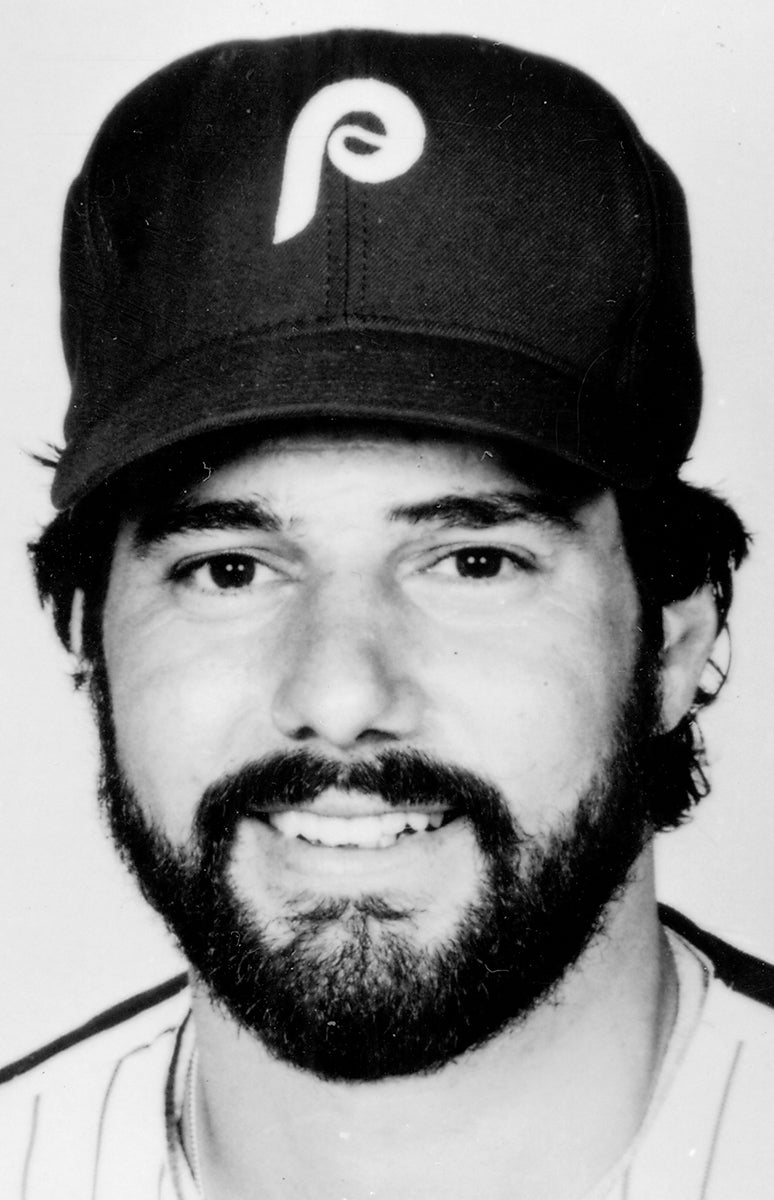
“I can’t really explain it,” Bedrosian told The Globe. “Things started bad at the beginning of the season (Bedrosian had a 7.84 ERA at the end of April). But (Phillies pitching coach Claude) Osteen helped me straighten things out. The team played great defense behind me and scored runs at key times. That’s what it takes.”
Bedrosian became the sixth pitcher in history to reach the 40-save mark on Sept. 25 against the Expos. He finished the year with a 5-3 record, 40 saves and a 2.83 ERA in 65 games while earning what would be the only All-Star Game selection of his career.
Rick Sutcliffe led the NL in wins that year with 18, but the most effective pitcher in the league was likely Houston’s Nolan Ryan, who led the league in ERA (2.76) and strikeouts (270) but had a record of 8-16.
In today’s voting era, Ryan might have won the NL Cy Young Award. Instead, it went to Bedrosian in a nail-bitingly close vote that saw him outpoll Sutcliffe 57 points to 55 while Rick Reuschel totaled 54.
Ryan finished tied for fifth place with 12 points.
Bedrosian became the third National League reliever to win a Cy Young Award following Mike Marshall in 1974 and Sutter in 1979.
“I’m not going to say that there wasn’t a starter in the league who didn’t have a good enough year to win (the) Cy Young,” Bedrosian told the Associated Press. “I want to think… that I’ve accomplished some things that hopefully will last for a long time.”
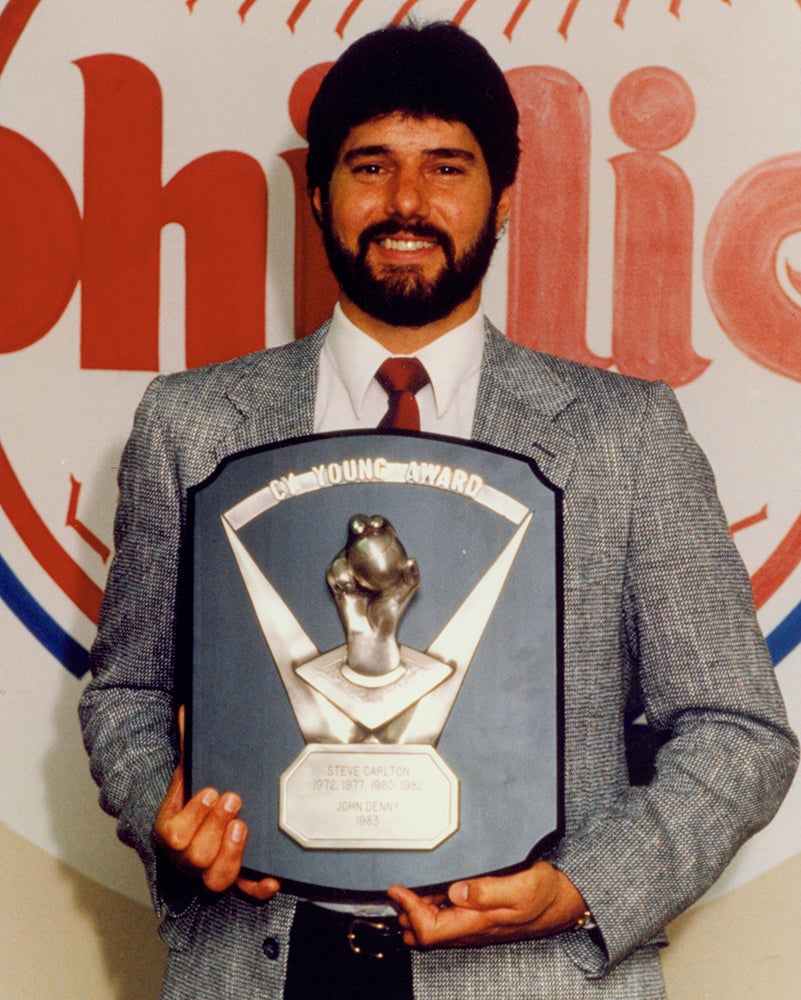
Bedrosian followed up his historic season with a 6-6 mark and 28 saves in 1988 then decided against testing the free agent waters by signing a three-year extension worth $4.35 million with the Phillies on Nov. 4, 1988. But with Philadelphia headed for a 95-loss season in 1989, Bedrosian was traded to the Giants on June 18 of that year in a deal that brought prospects Dennis Cook, Charlie Hayes and Terry Mulholland to the Phillies.
“They’ve been telling me that if things didn’t get much better that there was a good chance I would be traded,” Bedrosian told the AP. “It was inevitable that I would be moved.”
The Giants, in first place at the time, welcomed Bedrosian as they continued their push for the postseason.
“You hate to give up young pitching, but when you can get a solid stopper in return, you do it,” Giants manager Roger Craig told the AP. “To win, you have to have a stopper.”
Bedrosian gave the Giants what they were looking for, saving 17 games with a 2.65 ERA over 40 appearances as San Francisco won the NL West. Bedrosian pitched in four games in the NLCS vs. Chicago, recording saves in the final three contests as the Giants defeated the Cubs in five games to advance to the World Series.
Bedrosian pitched in two games in the Fall Classic, shutting out the Athletics over 2.2 innings as Oakland swept the Bay Area series that was interrupted by a catastrophic earthquake.

Bedrosian’s numbers slipped in 1990 as he went 9-9 with 17 saves and a 4.20 ERA in 68 games, totaling more walks (44) than strikeouts (43). The drop-off was understandable: Bedrosian’s two-year old son, Cody, was diagnosed with leukemia that year.
With one year left on his contract, Bedrosian was traded to the Twins on Dec. 5, 1990, in exchange for two minor leaguers.
“Cody being sick affected how I did on the field,” Bedrosian told the San Jose Mercury News in the spring of 1991. “I’m not an excuse-maker. That’s just the truth. Maybe I couldn’t rise above it. Maybe I should have been able to, I don’t know. All I know is I have a tremendous love for my kid.”
Cody’s leukemia was successfully treated, and his father moved into a set-up role with the Twins behind closer Rick Aguilera. Bedrosian was 5-3 with six saves in 56 games as the Twins won the AL West, putting him in the postseason for the second time in three seasons. He pitched in two games in the ALCS vs. Toronto and three more in the World Series against the Braves as the Twins won to give Bedrosian a World Series ring.
A free agent after the World Series, Bedrosian announced his retirement on Feb. 26, 1992 – a result of numbness in his pitching hand that plagued him throughout the 1991 campaign. But after sitting out the season, he felt the urge to play again and signed a minor league contract with the Braves on Dec. 17.
Doctors told him a combination of nicotine and stress caused his hand numbness, and – with the elimination of tobacco and Cody’s continued improvement – Bedrosian reclaimed his health and his fastball. He went 5-2 with a 1.63 ERA in 49 games for the Braves as Atlanta rallied to overtake San Francisco in an epic chase for the NL West title. But Bedrosian did not pitch in the NLCS as the Phillies defeated Atlanta in six games.
Bedrosian was effective again in 1994, going 0-2 with a 3.33 ERA in 46 games for the Braves. But in 1995, he was 1-2 with a 6.11 ERA in 29 games when he announced his retirement on Aug. 11 – this time stepping away for good.
“He was my best friend on the team,” Braves reliever Greg McMichael told the AP. “He meant a lot to everybody.”
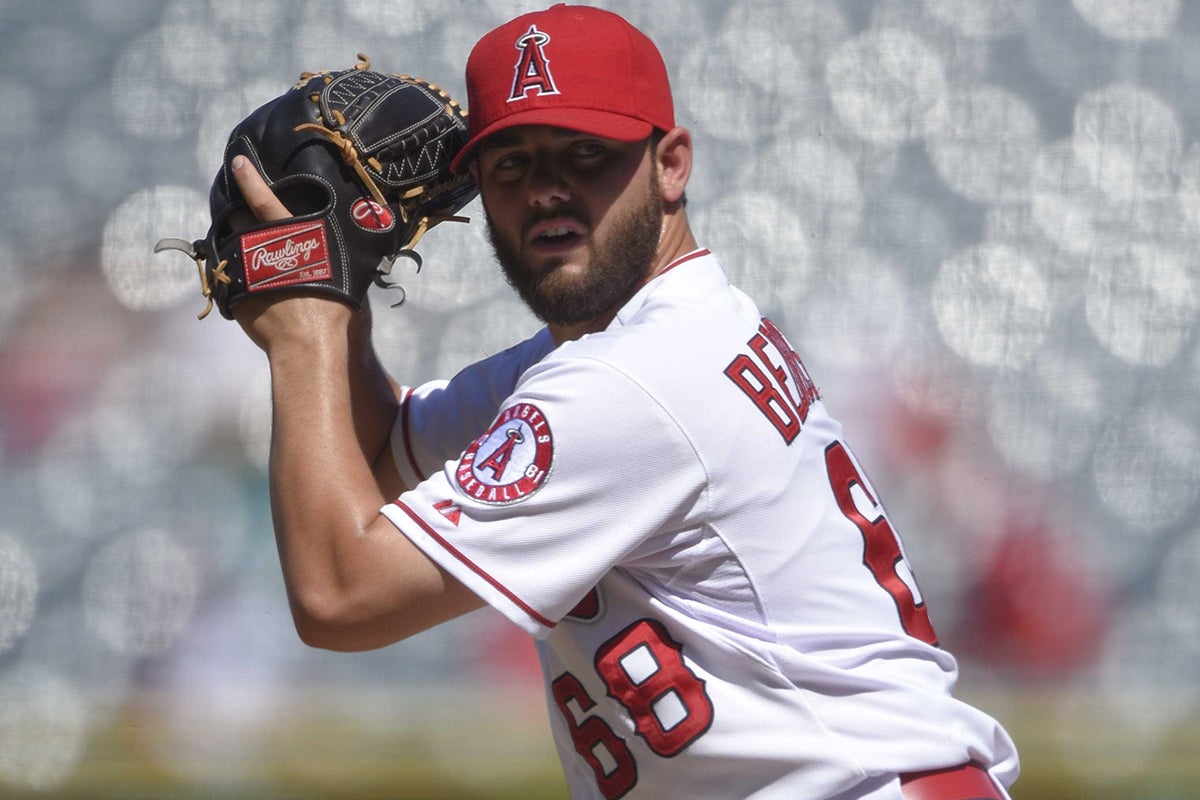
Bedrosian retired to his farm in Georgia, leaving behind a 76-79 record and 184 saves over 732 games. His son Cam would pitch eight years in the big leagues with the Angels, Reds, Athletics and Phillies – primarily as a reliever, just like his dad.
The pitcher nicknamed “Bedrock” always seemed to be able to weather any storm.
“I’ve learned I can’t get too high or too low,” Bedrosian told the Atlanta Journal during his epic 1987 season. “I’ve learned to walk the line between confidence and cockiness. I try to take things just one day at a time.”
Craig Muder is the director of communications for the National Baseball Hall of Fame and Museum


